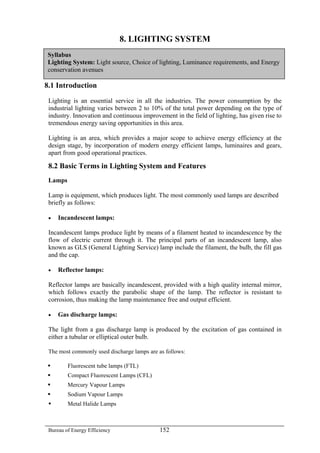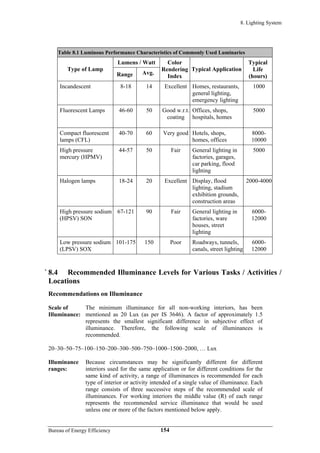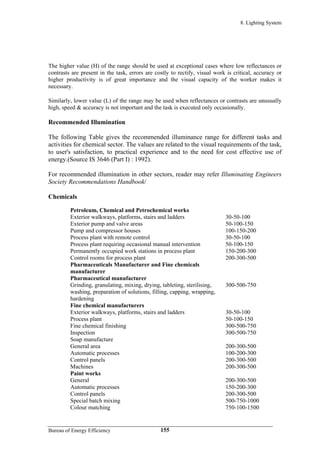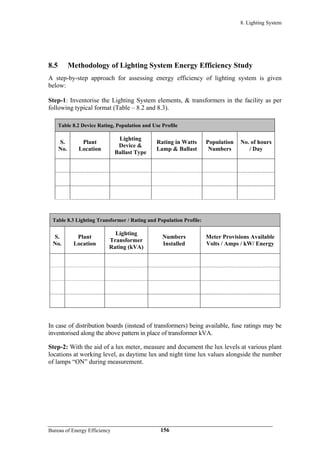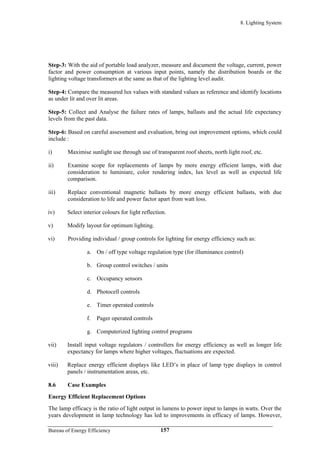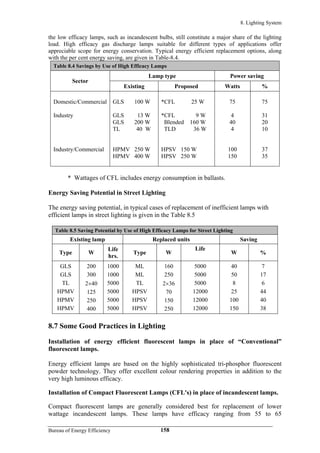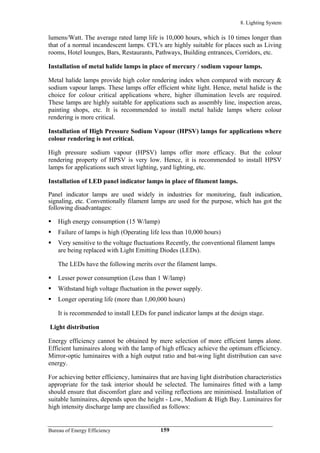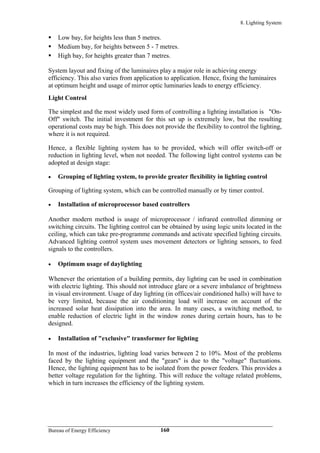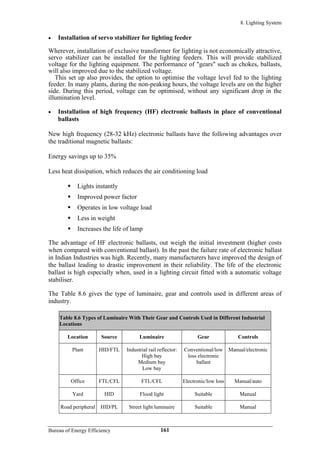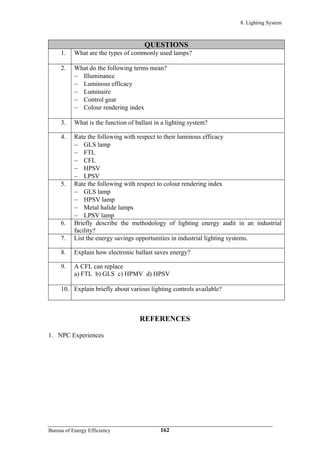This document discusses lighting systems and energy efficiency opportunities. It begins by introducing lighting systems and their typical energy usage. It then provides details on lighting components like lamps, luminaires, and control gears. Recommended illuminance levels for various tasks are presented in tables. The methodology for assessing lighting system energy efficiency is outlined in steps. Energy efficient replacement options for lamps are presented along with typical energy savings. Case studies on street lighting energy savings are also included. The document concludes with good practices for lighting system energy efficiency like installing efficient lamps and LED indicators.
